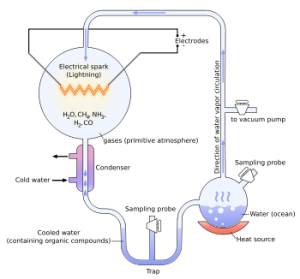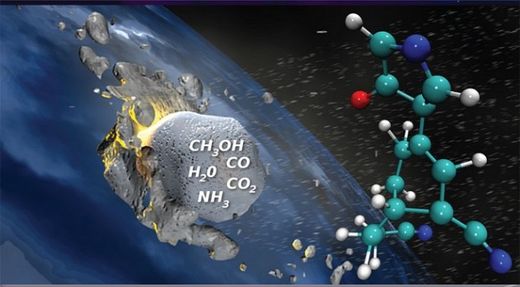Not so long ago, there was quite a bit of skepticism about the panspermia hypothesis - the idea that life on Earth got started by using alien molecules deposited by stellar travelers like comets or asteroids. At the time, this was presented as the somewhat harebrained imagining of overzealous science fiction fans. The more grounded alternative was to assume that all molecules necessary for life sprung exclusively from the conditions on ancient Earth. These days, however, there is significantly more credence given to the idea that life got a kickstart from alien molecules, and the support is beginning to come from all corners of the scientific world.
Now, even supercomputers are getting in on the action. A forthcoming study from Lawrence Livermore National Laboratory (LLNL) claims that new supercomputer simulations of comet impacts predict the formation of some of the most crucial organic compounds for life. By making use of new and highly efficient computational models, the researchers were able to look into a comet impact for much longer than ever before - in this case, up to several hundred picoseconds. That might not sound like much, but it's enough to see a wide array of organic molecules come together.
The famous Miller-Urey experiment tried to replicate the conditions of early Earth, and produced many complex organic molecules.
Conditions inside a comet impact are, as you might expect, rather extreme. By the time they reach the Earth's surface, the exterior of a comet may be super-heated from friction with the atmosphere, but the interior would remain frozen. The shock wave that runs through this tumultuous body when it hits the Earth causes not just heat but intense pressures as well. In the case of a glancing blow, we get "moderate" figures like short periods of about 360,000 atmospheres of pressure and 4,600 degrees Fahrenheit (2,537C). Higher shock conditions can lead to much as 600,000 atmospheres as over 8,000F (4,426C). This provides a spectrum of situations that could give rise to all sorts of different molecules.

And what quantities they are. During the eras of greatest bombardment, comets and asteroids may have brought as much as 10 trillion kilograms of organic matter to Earth every year. That's plenty of raw material, and these finding suggest that the mechanism of their delivery could also have provided the conditions needed to fuse that material into the complex molecules life would require. (See: Astrobiologists discover fossils in meteorite fragments, confirming extraterrestrial life.)
Comet impacts aren't the only way to spontaneously form complex molecules from simple ones, mind you. Classical, Earth-centric explanations range from simple chemical catalysts to intense UV radiation. Even if we someday acquire irrefutable evidence for the panspermia hypothesis, it would be foolish to assume that all of life's basic molecules came to us this way. Almost certainly, Earth's first replicator is a mosaic made of bits both terrestrial and alien.




has always been one of my pet Hypothesis. Hunch, Gut feeling, or sumpin.